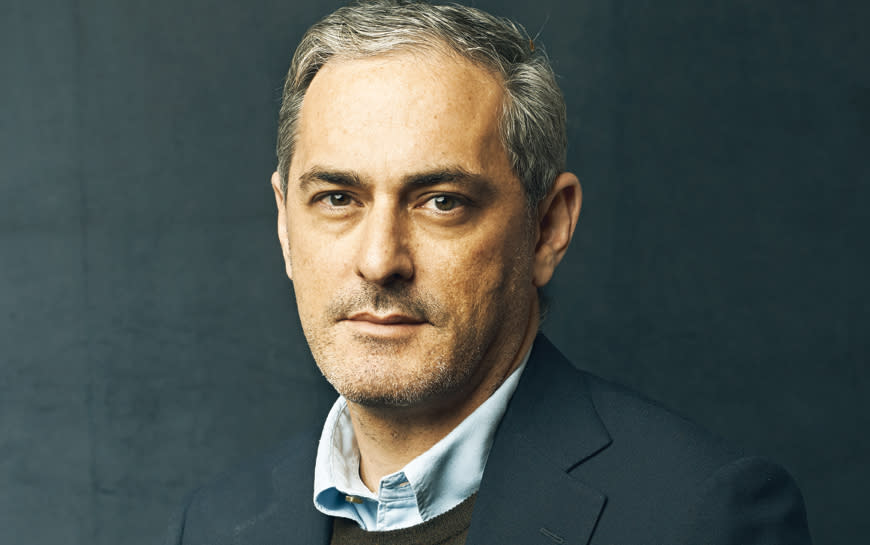‘Birdman’ Producer John Lesher On Michael Keaton’s Multi-Talents And Making A Play-like Movie

Every day on the set of Birdman was a different challenge. Not only was director Alejandro Gonzalez Inarritu attempting to create a film that appeared to be one seamless shot, but he was doing so in the heart of New York City—a difficult location at best. John Lesher says meticulous preparation and creative problem-solving were the keys to getting Birdman off the ground. That and casting Michael Keaton, who stars as a washed-up actor haunted by an iconic role from his past. The producer says Keaton has “singular authority” in his ability to move between comedy and drama. “One of the days that was scariest for us was where we had Michael Keaton running in his underpants through Times Square. You can’t control Times Square,” says Lesher, who also spoke about the technical hurdles of achieving Birdman’s magical realism. The efforts most recently have paid off in a Golden Globe nomination for Birdman in the best comedy or musical category.
This is an unconventional, ambitious movie, but what made it so difficult to get financed?
Whenever you’re trying to do something that someone hasn’t done before, it’s challenging. Then we really wanted Michael Keaton to be in the movie, and Michael’s a brilliant actor, but he hadn’t been in a big hit for a while. A lot of times people base if they will make your film on past performance and what they perceive for foreign and international value. And we kept saying that we’re going to put this incredible ensemble together, but until you actually do that, it’s sometimes difficult for people to take that leap of faith. It was only financed because three different people came in, each with a third of the budget: New Regency, Searchlight and Worldview Entertainment.
What did you and Alejandro talk about in terms of the technical challenges of making the film?
It was always Alejandro’s intention to make the move in a unique way, so it would feel like you were with Michael’s character the entire time, that kind of claustrophobia. So it wasn’t your traditional cutting. We met about six months before we started shooting to map out how to go about doing this. Chivo (DP Emmanuel Lubezki), who’s the master of these long takes, said we have to rehearse a lot. We had to get all the actors to come onboard and devote themselves—not only for scale but also to give us a lot of free rehearsal time. They all mercifully did, and so we rehearsed for a couple of months. If we hadn’t done that, we wouldn’t have been able to make it. We shot the movie in 29 days.
Did Alejandro shoot rehearsals?
Yes. We worked with both stand-ins and our real actors. We did table reads, we did rehearsals in two different places in L.A., and then, of course, we rehearsed in New York. It was an incredible ballet with all the different departments. Props, production design—everything had to be in its place. It’s a movie that’s shot a lot like a play, so you have all of these elements working together.
With all of the postproduction work associated with stitching scenes together, did the film have a bigger post budget than usual?
The movie was made a little bit in reverse. Alejandro worked with the editors during the rehearsal process. They were cutting together, and we also were practicing. What kinds of things can we do and can’t we do? Can we make a stitch? How can we construct this? So Alejandro was constantly challenging his editors to say, “Is this possible?” The movie came together initially very quickly in post because they had done all this trial and error and pre-editing. One of the things we didn’t figure out was how we were actually going to do the flying, so some of the stuff we left until post. But it didn’t take longer in post than any other movie really.
So how did you tackle the flying?
Oh, I’m not going to tell that. We did it with very low tech, but I like the way it turned out.
How did you keep the costs of shooting in New York low?
The movie essentially takes place in a Broadway theater—on the stage and in the dressing rooms and the hallways. We tried to keep our footprint small, but then use our location in Times Square as our base camp to sneak outside. All these things are within walking distance of the St. James Theatre, which is on West 44th Street. Everyone told us the horrors of trying to make a movie in a Broadway theater house, but when we went and looked at different theaters, both Broadway and off-Broadway, it was clear to us that nothing quite looked like a Broadway theater. There’s a grandness, but also an intimacy, that those theaters really have.
The backstage area really looked claustrophobic, with those narrow, dark hallways.
Not to give too much away, but all of those things we built on a sound stage in Queens. It had to feel very natural and very loose, but everything was incredibly well planned. You couldn’t have actually made the movie the way we did if you didn’t build some of that stuff. We had some of the greatest people in the film business helping us keep it so that it felt seamless.
John Lesher photographed by J.R. Mankoff
Related stories
Golden Globes Movies: No Jolie, Eastwood, Pitt, Cooper? HFPA Forges A Less Starry Path
SAG Awards Movies: Jennifer & Jake Take The Cake As Actors Offer Some Surprises
Get more from Deadline.com: Follow us on Twitter, Facebook, Newsletter

